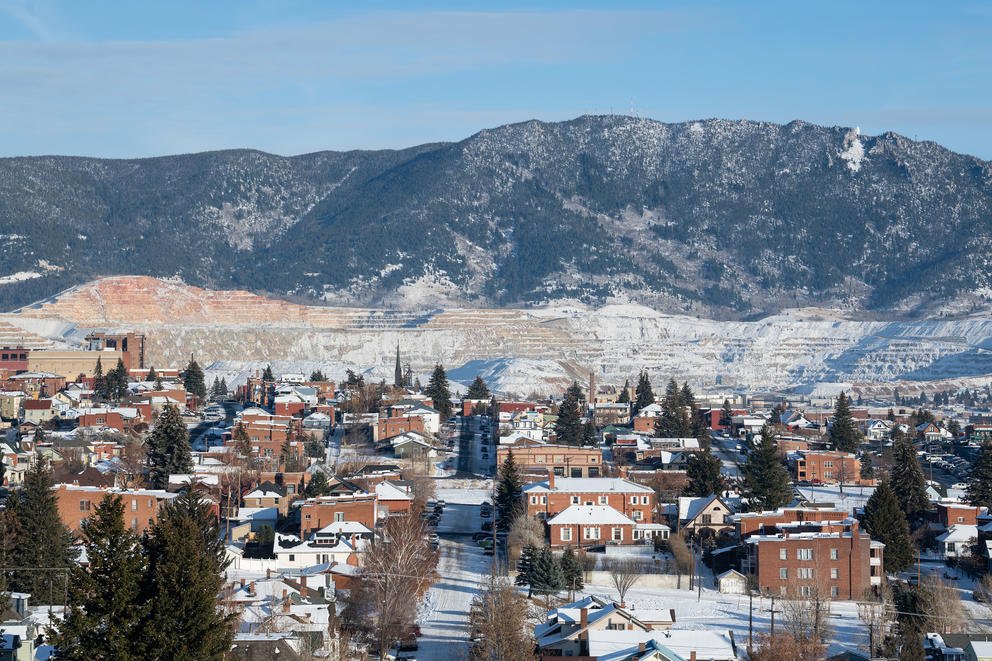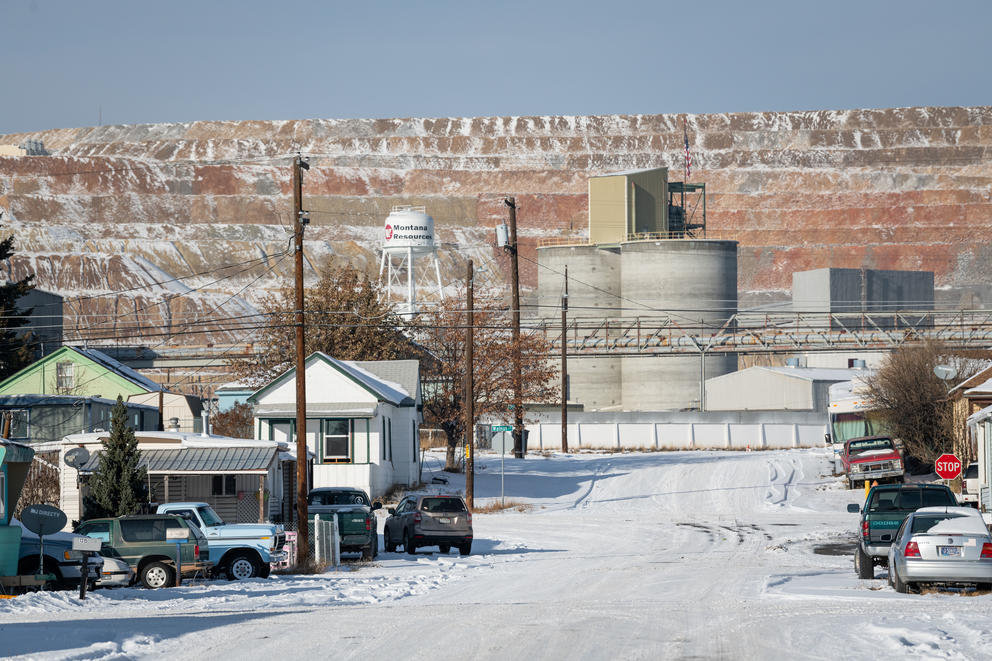Those steps include more frequent public meetings, evaluation of public health data to “identify potential gaps” and hiring a community involvement coordinator to work in Montana.
Meanwhile, Montana Resources, operator of the active copper and molybdenum mine in Butte, said last week that it would pay for research on the health impact of the mine’s dust.
The announcements come in response to an InvestigateWest story published earlier this month on Crosscut that uncovered how the EPA coordinated with Montana Resources to rebut independent, peer-reviewed research that suggested the mine may be causing a “potential public health emergency.”
Emails between the EPA and Montana Resources, first reported by InvestigateWest, outraged some residents concerned about the health impact of the mine and how the EPA has handled questions about it. Derf Johnson, a policy advocate with the environmental advocacy group Montana Environmental Information Center, said that since the story came out, the mine has “come to the table” by offering to fund further research. The EPA, meanwhile, is doing “damage control,” he said.
InvestigateWest (invw.org) is an independent news nonprofit dedicated to investigative journalism in the Pacific Northwest.
“The story pushed things over the edge in terms of people’s suspicions about how the town operated,” Johnson said.
EPA regional administrator K.C. Becker visited Butte last week to hear directly from officials and community members, including Montana Technical University bioinorganic chemist Katie Hailer, whose research was the subject of email correspondence between the mine and EPA officials.
“During the visit, my staff and I heard from community members about the desire for more transparency and are taking action to ensure the community can meaningfully engage in decisions related to the Superfund cleanup,” Becker said in a statement.
Hailer did not return a message seeking comment on the meeting.
The Butte area has been designated as a Superfund site by the EPA due to previous mining that left behind toxic waste. Montana Resources and Atlantic Richfield Company are charged with remediation of the Superfund site, but Montana Resources also operates an adjacent mine across the street from a residential neighborhood in Butte. For years, locals have been concerned with the mine’s proximity to residents and its potential health effects.
Those concerns were further fueled by a 2019 study that found high levels of heavy metals in Butte samples of meconium, or a baby’s first poop. The researchers involved — Hailer and environmental epidemiologist Suzanne McDermott — acknowledged potential flaws in the small, underfunded study but pushed the EPA to replicate the study on a larger scale. Instead, EPA officials worked to cast doubt on it while, behind the scenes, encouraging Montana Resources to do the same, InvestigateWest found.
In a press release this week, the EPA said it will take “multiple actions” to increase transparency “related to the agency’s continuing Superfund cleanup efforts” in Butte. Asked what kind of health data in Butte will be reviewed, EPA spokesperson Richard Mylott said the review would include blood lead data and continued evaluation of cancer rates, tumor registries and other “relevant health studies,” along with any “significant gaps related to health concerns.”
“We will work with partners and engage with the community as we move forward and will examine options for collecting additional information as needed and appropriate,” Mylott said.
But the EPA said it doesn’t have the authority to support research into questions of the health impact of the current Montana Resources mine. Asked if the EPA will consider funding more research following up on the 2019 meconium study or look into the effects of the active mine, Mylott said that authority resides with the Montana Department of Environmental Quality.
Johnson, the policy advocate, said the EPA is talking “out of both sides of its mouth.”
“On one side they’re saying they have no responsibility over the active mine. And on the other side they’re working to discredit science [regarding the active mine],” Johnson said in an interview.
Now, the mine itself says it will fund research into those questions. Mark Thompson, Montana Resources vice president for environmental affairs, said last week that he had offered to fund research into the health effects of mining dust, and he even invited Hailer to be a part of it.
Mylott told InvestigateWest that the EPA would “consider ways to support the effort if asked,” but has not been approached.
For now, Johnson is skeptical that the EPA will be as transparent moving forward as it claims.
“I’m glad they’re looking at it and taking it seriously. But the proof is going to be in the pudding,” Johnson said. “It’s all about how they follow through.”
InvestigateWest (invw.org) is an independent news nonprofit dedicated to investigative journalism in the Pacific Northwest. Reach reporter Wilson Criscione at wilson@invw.org. This reporting was supported in part by a grant from the Fund for Investigative Journalism.




